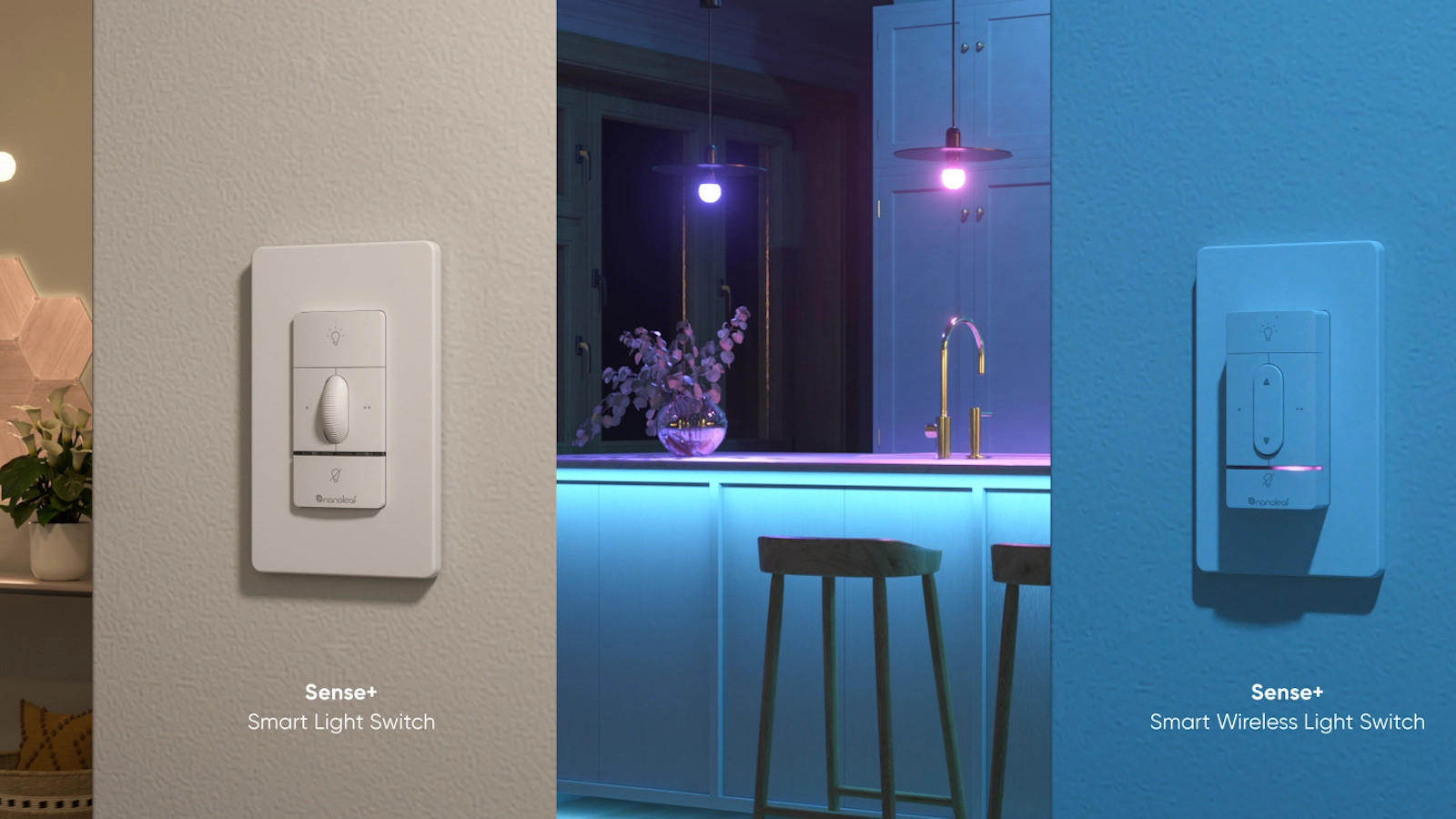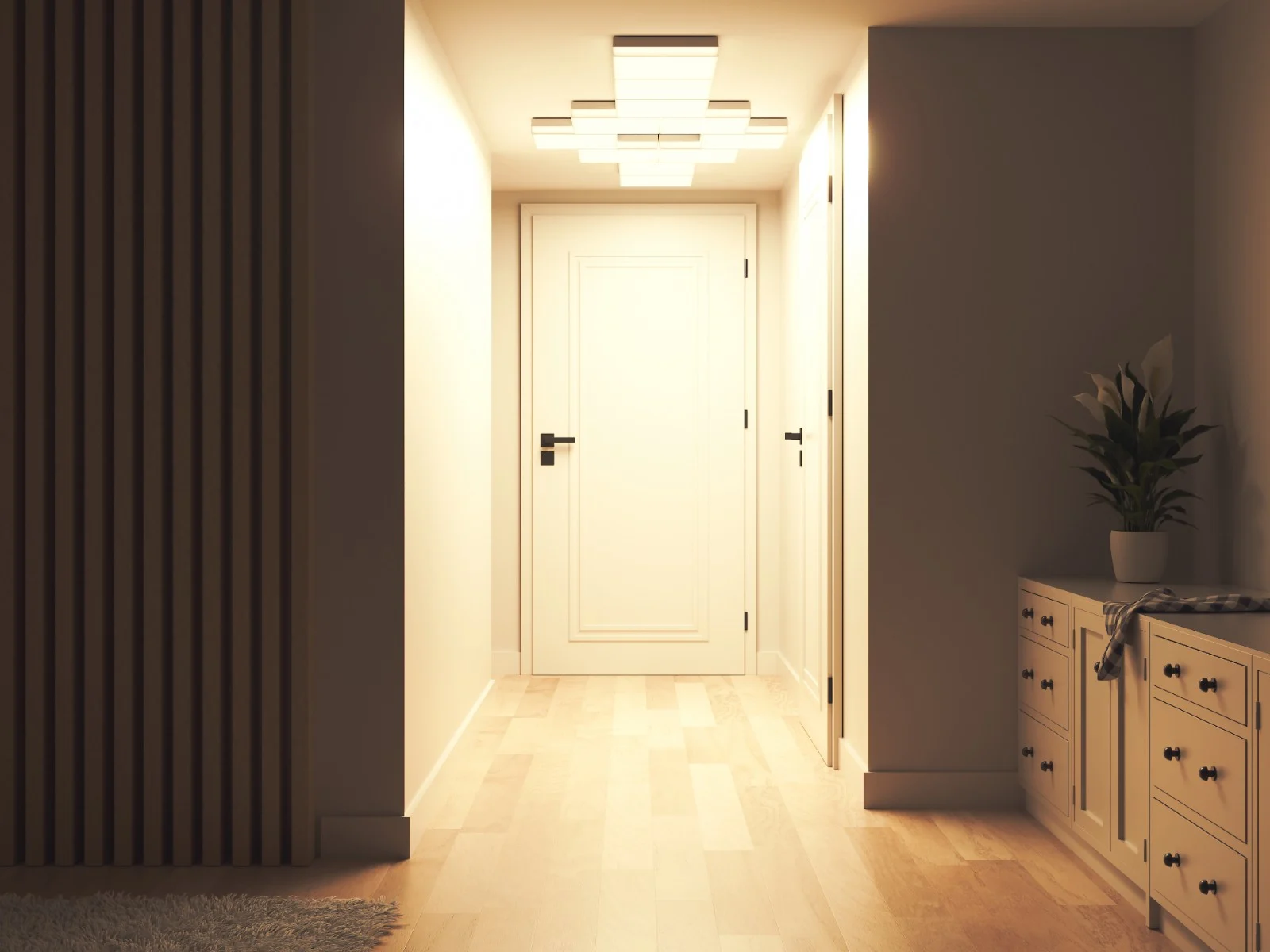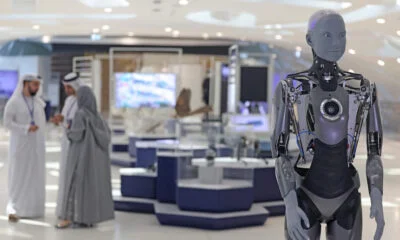News
Nanoleaf Sense+ Control Lighting Handles Automation By Itself
The smart light switches connect to a Thread Border Router known as the Nala Learning Bridge, which features an onboard assistant.

Smart devices such as light bulbs and switches have been around for a long time. These products allow you to turn lights on and off remotely, adjust colors and brightness, plus set up automatic schedules.
There is, however, a slight catch.
Until now, the scheduling part of the equation is something you’ve mostly had to handle yourself, and depending on the app in question, the experience can often be frustrating and time-consuming.
Nanoleaf aims to fix those scheduling issues with its newly announced Sense+ Control family of products. The smart device lineup consists of the Sense+ Smart Light Switch, Sense+ Wireless Light Switch, and Nala Learning Bridge. All three products are Matter and Thread enabled and feature built-in motion and ambient light detection. The Nala Learning Bridge functions as a Thread Border Router and acts as the smart home network’s hub while featuring its own ambient lighting.

As well as a router, Nala is also the name of the Nanoleaf Automations Learning Assistant. The inbuilt technology uses complex machine learning algorithms to predict a user’s routines and adjust lighting accordingly. The company claims that, “Over time, users will be able to have a truly intelligent and hands-free experience with the smart lighting in their home.”
Nanoleaf 4D

Also announced at this year’s CES 2023 was the Nanoleaf 4D, a system that synchronizes Nanoleaf lights with your TV. The system will ship with the Nanoleaf Screen Mirror Camera and a light strip featuring 50 customizable LED zones.
Using Nonoleaf’s Sync+ technology, the Nanoleaf 4D can mimic your screen’s colors and lighting patterns across all of the other Nanoleaf lights in the room, and supports pre-made scenes, including sunrises.
Nanoleaf Skylight

Nanoleaf already offers modular wall panels in its lineup, but soon, the company will add a set of square RGBW LED panels that can be arranged in different patterns on ceilings.
Named Skylight, this new product includes Nanoleaf’s screen mirroring technology, a music visualizer, and supports group scenes. Like the Nala Learning Bridge, Skylight can also be used as a Thread Board Router.
Finally, the company will also update its Essentials line to make them Matter compatible and release software updates to ensure everything works harmoniously. The Sense+ Control line, Nanoleaf 4D, and Skylight should all arrive in stores by the second half of 2023, with pricing yet to be announced.
News
Mamo Completes $3.4M Funding Round To Enhance Fintech Services
The startup will use the influx of cash to expand into Saudi Arabia and across the wider GCC while improving its product offering.

UAE-based fintech Mamo has announced the completion of a $3.4 million funding round that will help the startup extend its market presence and improve its product offering. Investors included 4DX Ventures, the Dubai Future District Fund and Cyfr Capital.
Mamo’s platform offers “payment collection, corporate cards and expense management” to help small and medium-sized businesses consolidate and streamline their operations. With the latest influx of capital, Mamo will further develop its comprehensive suite of services and begin testing its product lines in Saudi Arabia, further extending its footprint across the GCC.
Imad Gharazeddine, co-founder and CEO of Mamo, stated: “We’ve been in the market for a while now and are incredibly proud of what our team has achieved. The holistic and expansive nature of our product offering has helped us continue to grow sustainably. This additional funding will allow us to reach our medium-term goals even faster. The support from new and existing investors is a testament to our strong expertise and the ability to deliver on our customer promise”.
Daniel Marlo, General Partner of lead investor 4DX Ventures, added: “We have immense trust in Imad’s vision, leadership and Mamo’s innovative approach to provide a user-friendly and comprehensive financial solution for SMEs that makes financial management more accessible and efficient. We are proud to partner with them and support their mission”.
Also Read: A Guide To Digital Payment Methods In The Middle East
Amer Fatayer, Managing Director of Dubai Future District Fund’s investment team, also commented: “Mamo’s localized product lines serve as an infrastructure for SME payments and spend management in UAE, a segment that is underserved by the country’s current banking infrastructure. The team has taken a product-first approach to consolidating SMEs’ financial journeys and building a fintech solution deeply embedded in a business’s core operations”.
To date, Mamo has raised around $13 million in investment funding and now boasts a team of 30 people. The company’s intuitive financial services platform has allowed over 1,000 businesses to consolidate their financial operations and significantly reduce payment fees.
-

 News4 weeks ago
News4 weeks agoAmazon Prime Day 2024: Get Ready For 6 Days Of Amazing Deals
-

 News4 weeks ago
News4 weeks agoSamsung Unpacked 2024: What To Expect From The July 10 Event
-

 News4 weeks ago
News4 weeks agoCoursera Report Shows Surge In UAE Interest In AI Upskilling
-

 News4 weeks ago
News4 weeks agoMeet Dubai’s Groundbreaking Smart Robot Delivery Assistant










